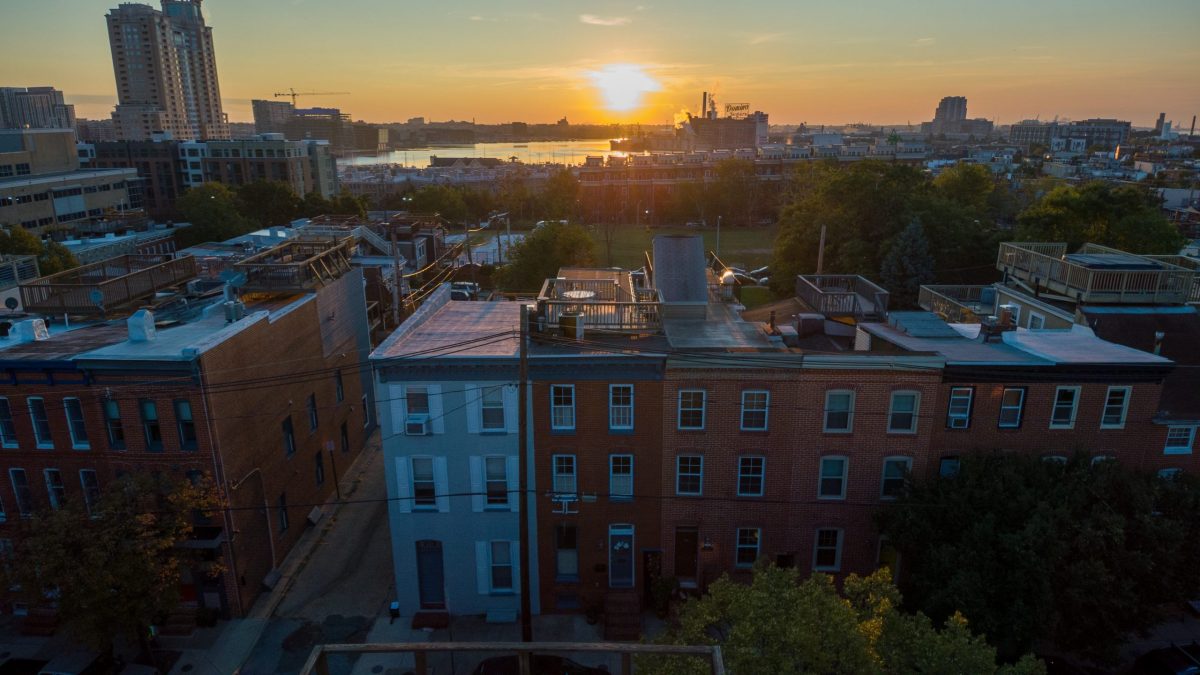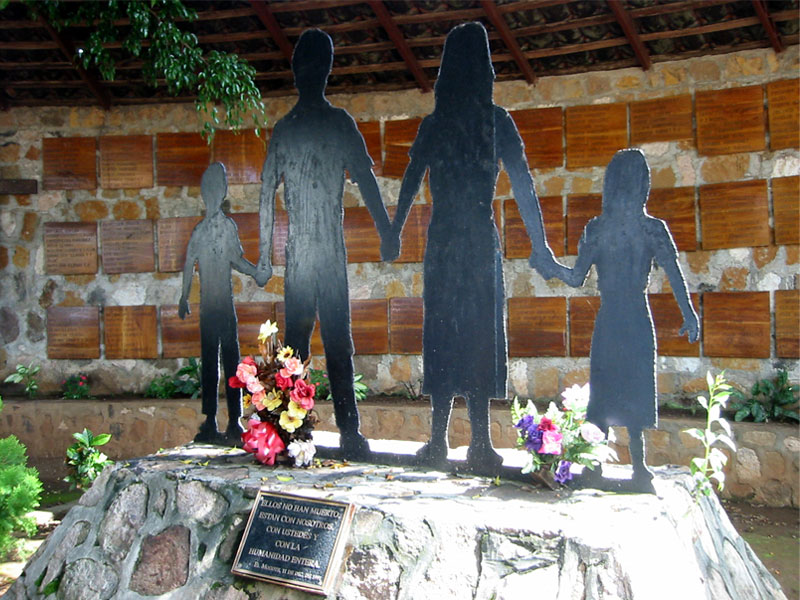The cover story of the December 6th, 1993 issue of the New Yorker was akin to a thunderclap. Written by Mark Danner, the article entitled The Truth of El Mozote is a 22,000-word account of the My Lai-like massacre of nearly 1,000 villagers in the central American country of El Salvador. It begins:
“Heading up into the mountains of Morazán, in the bright, clear air near the Honduran border, you cross the Torola River, the wooden slats of the one-lane bridge clattering beneath your wheels, and enter what was the fiercest of El Salvador’s zonas rojas — or “red zones,” as the military officers knew them during a decade of civil war — and after climbing for some time you take leave of the worn blacktop to follow for several miles a bone-jarring dirt track that hugs a mountainside, and soon you will find, among ruined towns and long-abandoned villages that are coming slowly, painfully back to life, a tiny hamlet, by now little more than a scattering of ruins, that is being rapidly reclaimed by the earth, its broken adobe walls cracking and crumbling and giving way before an onslaught of weeds, which are fuelled by the rain that beats down each afternoon and by the fog that settles heavily at night in the valleys. Nearby, in the long-depopulated villages, you can see stirrings of life: even in Arambala, a mile or so away, with its broad grassy plaza bordered by collapsed buildings and dominated, where once a fine church stood, by a shell-pocked bell tower and a jagged adobe arch looming against the sky — even here, a boy leads a brown cow by a rope, a man in a billed cap and bluejeans trudges along bearing lengths of lumber on his shoulder, three little girls stand on tiptoe at a porch railing, waving and giggling at a passing car.”
But follow the stony dirt track, which turns and twists through the woodland, and in a few minutes you enter a large clearing, and here all is quiet. No one has returned to El Mozote. Empty as it is, shot through with sunlight, the place remains — as a young guerrilla who had patrolled here during the war told me with a shiver — espantoso: spooky, scary, dreadful. After a moment’s gaze, half a dozen battered structures — roofless, doorless, windowless, half engulfed by underbrush — resolve themselves into a semblance of pattern: four ruins off to the right must have marked the main street, and a fifth the beginning of a side lane, while an open area opposite looks to have been a common, though no church can be seen — only a ragged knoll, a sort of earthen platform nearly invisible beneath a great tangle of weeds and brush.
Relying principally on excavations by an Argentine forensic team sifting through the mass graves, and a Salvadoran woman, Rufina Amaya Marquez, who managed to escape the carnage, Danner tells the poignant story of what happened in a remote corner of the Americas over two days in December of 1981. In doing so, he rebuts the U.S. government’s steadfast characterization of the slaughter as a skirmish between CIA-backed Salvadoran troops and Marxist guerillas.
The New Yorker billed Danner’s Truth of El Mozote as a “parable of the Cold War” and, indeed, it shined a spotlight on the proxy wars that erupted across the global South, pitting the mostly Europeans who owned colonized settlements across the Americas, Africa, Asia, and the Middle East, against the black and brown workers who built them. Yet it also represents a triumph of nonfiction storytelling, and the intimate reportage that is its rebar, providing a showcase for a model of journalism, now defunct, that is transformative rather than transactional.
Danner’s artful prose has all-but disappeared from today’s media, replaced by 16-character tweets, memes, and something called listicles. Gone are storytellers who trafficked in deep and close-up reporting and interviews with the people-on-the ground, and in their place have surfaced bloggers and podcasters and pundits who seem preoccupied with gazing at their own navels rather than storytelling. Much like the leftist dissidents from Argentina’s La Guerra Sucia, or Dirty War, Rufina Amaya Marquez and her encounter with evil would be disappeared, airbrushed, as it were out of the picture, leaving the telling of her story to those who tried to kill her, and those who experienced it second-hand, if at all.
What is lost, ultimately, is an understanding of both the world and each other. Whether we realize it or not, we need stories; the best educators, trial lawyers, and politicians can attest to the power of storytelling. Narrative strengthens our humanity, informs our democracy, fends off ignorance and ennui. Journalism in the U.S. has never been good overall —I can make a compelling argument that the news media’s raison d’etre has traditionally been to head off class war in America by fomenting a race war — but at its best, as exemplified by Danner’s work in El Salvador, it can narrow the yawning divide that is the source of our discontent.
Today’s journalists have abandoned even the pretense of inquiry in an effort to reproduce inequality by asserting their authority, their singular expertise in addressing all that ails we, the people. This explains why they typically eschew narrative and reportage for access to the powerful and panels of pundits and politicians which continues to center the very same voices who are wholly responsible for the perfect storm of political, economic and environmental crises that are bearing down on us. Consider for a moment the architecture of storytelling like Danner’s, which centers not the journalist, but his or her subject.
Contrast that with the Intercept’s interview last year with Brazil’s ex-president Luiz Inácio Lula da Silva, who was jailed at the time on trumped-up corruption charges pressed by conservative politicians who wanted to derail a reelection bid by the popular president, commonly known as “Lula.” In the wide-ranging interview, Glenn Greenwald covered a lot of ground and did not spare Lula the tough questions about the failures of both his administration or the policies of his center-left Workers Party. But what Greenwald failed to do is identify the narratives that, like Danner’s article 26 years earlier, might’ve deepened our understanding not just of Brazil, but of our own country, and the world.
Greenwald failed to explore in his follow-up questioning, or produce a follow-up documentary based on the interview, which could’ve contextualized Lula and his Workers’ Party as part of Latin America’s Pink Tide, an uprising of leftist governments that began to sweep America’s “backyard” bracketed by the 1998 election of Venezuela’s socialist president Hugo Chavez, and the 2007 election of Rafael Correa. First elected in 2002, Lula clearly distanced his government from the Pink Tide, choosing a moderate third way, akin to Bill Clinton, that produced some modest, liberal reforms, but did nothing to sever Brazil’s ties to Wall Street finance. For much of his presidency, and that of his successor, Dilma Rousseff, Brazil continued to pay interest rates on its public debt that was among the highest in the world, privileging investors while killing exports, and job creation. Given that the only Pink Tide state that survived the offensive from Washington is the nation that embraced socialism most ardently, Venezuela, will Lula embrace more radical, transformative policies that appeal to Brazil’s black majority in his political comeback? That question would have particular resonance stateside. The Portuguese settlers imported more Africans to toil as slaves than any country in the world —the U.S. is a distant second —and today is home to more people of African descent than any country save Nigeria. Slavery in Brazil outlasted its American counterpart by 23 years. Consequently, Brazil is virtually a mirror image of the U.S. in terms of economic inequality, violence against blacks, and the voters’ choice of a vile, Donald Trump mini-me as president. Said Lula:
“It’s because this isn’t just an economic question; it’s a cultural issue. One has to remember that it was only a little over a hundred years ago that slavery was legally abolished, and that it continues in the minds of many. That’s why the greatest victims of police violence are black, that’s why those who are black earn less than 50 percent less than those who are white, and that’s why black women earn less than white women. That’s why those who are black have a lower average level of schooling than those who are white. Why? Because slavery is still prevalent deep within people’s consciousness. It’s a harsh thing to say but it’s true. And this doesn’t change overnight. Really, I think deep down it’s not an economic question. It’s a set of cultural, political and sociological issues.”
Sound familiar?
Contextualizing Lula’s interview historically represents journalism that can heal by connecting the dots, and shining a light on our way forward.
Part of the problem is simply a numbers game. Never especially diverse, the news media has undergone a stark transformation over the last generation, triggered by Bill Clinton’s 1996 Telecommunications Act, which deregulated the industry and allowed giant corporations to buy up thousands of news outlets across the country, tightening their monopoly on the flow of information in the United States and around the world. Since the law was enacted, the number of black journalists in U.S. newsrooms has plummeted by nearly half, from 2,946 in 1998 to 1,560 in 2015, according to the American Society for Newspaper Editors, or ASNE. On a per-capita basis, that figure is slightly smaller than it was in 1890, when the U.S. Census counted 300 black journalists out of a total population of 62 million, compared with 330 million today.
According to ASNE, as a percentage of the workforce, blacks accounted for 5.4 percent of all editorial staff in 2015 — a proportion virtually identical to the 1968 Kerner Commission Report’s estimate that African-Americans represented only 5 percent of the nation’s journalism workforce then. Even fewer, about 1 percent, are supervising editors.
The Kerner Commission was charged with identifying the causes of the season of revolts that erupted in America’s big cities beginning with the Watts rebellion in August of 1965 and climaxed three years later following the assassination of Martin Luther King Jr. The common thread in all of the riots, the report’s authors wrote, was racial discrimination in housing, education, job opportunities and, centrally, the news media, which was so disconnected from the black community writ large that it had almost nothing useful to say about its causes, or how to prevent such uprisings in the future.
Danner is white, but he worked in a journalistic milieu in which there was at least an effort in newsrooms across the country to rectify the issues identified by the Kerner Commission report, although it was eventually overwhelmed by the campaign to whitewash history and discourage whites from supporting the progressive social movements of people of color. Seldom does the media connect us to a world outside the Beltway, or beyond Harvard Square. The result is a media milieu which hits the mute button on Rufina Amaya Marquez, and where, to quote Ossie Davis’ character, Da Mayor, in Spike Lee’s iconic 1989 movie Do the Right Thing, “those who’ll say, don’t know, and those who know, can’t say!”



